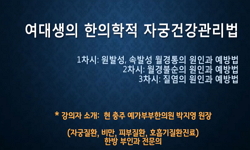불교의학은 고대 인도의 원시의학인 아유르베다를 토대로 하여 불교의 동아시아 전래와 함께 중국의 한의학을 흡수하면서 발전해왔다. 한국의학에 강력한 영향을 주었던 중국의학 역시 서...
http://chineseinput.net/에서 pinyin(병음)방식으로 중국어를 변환할 수 있습니다.
변환된 중국어를 복사하여 사용하시면 됩니다.
- 中文 을 입력하시려면 zhongwen을 입력하시고 space를누르시면됩니다.
- 北京 을 입력하시려면 beijing을 입력하시고 space를 누르시면 됩니다.

한국 불교의학의 전래와 醫僧들의 활동에 관한 일고찰 = A Study on the Transmission of Buddhist Medicine and the Activities of Buddhist Medicine Monks in Korea
한글로보기https://www.riss.kr/link?id=A101828415
- 저자
- 발행기관
- 학술지명
- 권호사항
-
발행연도
2013
-
작성언어
-
- 주제어
-
KDC
220
-
등재정보
KCI우수등재
-
자료형태
학술저널
-
수록면
339-366(28쪽)
- DOI식별코드
- 제공처
- 소장기관
-
0
상세조회 -
0
다운로드
부가정보
국문 초록 (Abstract)
불교의학은 고대 인도의 원시의학인 아유르베다를 토대로 하여 불교의 동아시아 전래와 함께 중국의 한의학을 흡수하면서 발전해왔다. 한국의학에 강력한 영향을 주었던 중국의학 역시 서역의 의약문화가 실크로드를 거쳐서 중원 내륙에 수용된 융합물이었다. 한국의 불교의학사를 보면 중국을 매개로 하여 인도의학이 전래되면서 많은 醫僧들이 활동했지만 점차 불교의학이 민간의학으로 흡수되어가는 것을 볼 수 있다. 승려의 의술은 포교라는 실리와 자비행이라는 명분을 다 충족시킬 수 있는 실천이었으며, 불교를 민간에 보급하는데 중요한 역할을 했다. 반불교정책이 실시되었던 조선시대에는 정부의 요구에 따라 승려들이 한증승, 의승, 매골승의 형태로 활동하면서 불교가 살아남을 길을 찾기도 했다. 고대 인도시기부터 의승들은 의학과 불교 교의를 결합하여 의술로써 중생의 몸과 마음의 고통을 치료한다는 명분을 가지고 있었다. 승려의 의료행위는 비록 그 목적이 불교의 포교에 있다 할지라도 교의상으로는 중생구제를 위한 자비행으로서, 결과적으로는 의학의 발전에도 공헌한 바가 컸다고 볼 수 있다.
다국어 초록 (Multilingual Abstract)
Buddhist medicine developed upon a foundation of Ayurveda, the primitive medicine of ancient India, and absorbed traditional Chinese medicine as Buddhism spread through East Asia. Chinese medicine, which had a strong influence on Korean medicine, was ...
Buddhist medicine developed upon a foundation of Ayurveda, the primitive medicine of ancient India, and absorbed traditional Chinese medicine as Buddhism spread through East Asia. Chinese medicine, which had a strong influence on Korean medicine, was also a product of fusion when Western and Middle-Eastern medical culture were adopted in mainland China after passing through the Silk Road. If we look at the history of Korean Buddhist medicine, we see that although there were many medicine monks that accompanied the transmission of Indian medicine via China, Buddhist medicine was gradually absorbed into folk medicine. The medicine of monks was a practice that could fulfill both the duty of proselytization and the moral obligation of benevolence, and it filled an important role of spreading Buddhism to the people. During the anti-Buddhism policies of the Joseon Dynasty, Buddhism had tried ways to survive: the monks worked as hanjeung (sauna therapy) monks, medicine monks, and maegol (cremation and burial) monks according to the demands of the government. The duty of medicine monks, since ancient times in India, were to heal the illnesses of people’s bodies and souls through the medical arts, by combining medicine and Buddhist doctrine. Although the purpose of medical acts by monks was proselytization, in terms of doctrine it was a practice of benevolence to save people. Consequently, Buddhist medicine also left a great contribution to the development of medicine in Asia.
목차 (Table of Contents)
- Ⅰ. 서론
- Ⅱ. 한국에서의 불교포교와 의승
- 1. 유행승(遊行僧)과 불교포교
- 2. 삼국시대의 불교의학과 의승
- Ⅲ. 고려시대의 의승들의 활약
- Ⅰ. 서론
- Ⅱ. 한국에서의 불교포교와 의승
- 1. 유행승(遊行僧)과 불교포교
- 2. 삼국시대의 불교의학과 의승
- Ⅲ. 고려시대의 의승들의 활약
- Ⅳ. 조선정부의 불교정책과 의승들의 활동
- Ⅴ. 결론
동일학술지(권/호) 다른 논문
-
- 불교학연구회
- 조승미(CHO, Seung-mee)
- 2013
- KCI우수등재
-
『십지경』의 가장 오래된 두 네팔 산스크리트 사본의 전사(轉寫)―「현전지」(I)
- 불교학연구회
- 이영진(LEE, Young-jin)
- 2013
- KCI우수등재
-
- 불교학연구회
- 강대현(KANG, Dae-hyun)
- 2013
- KCI우수등재
-
- 불교학연구회
- 이자랑(LEE, Ja-rang)
- 2014
- KCI우수등재





 RISS
RISS 스콜라
스콜라







